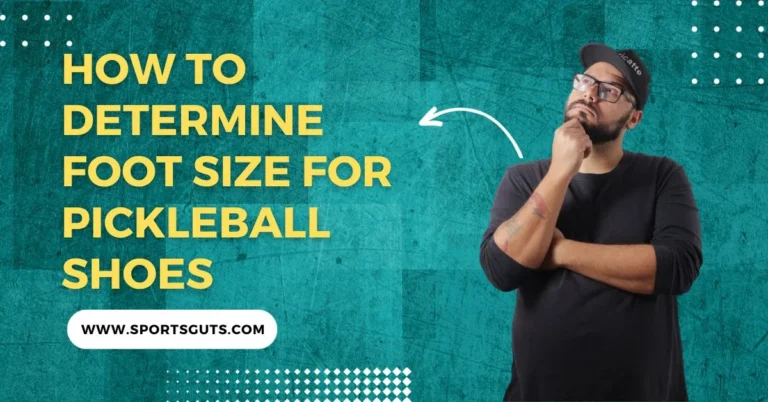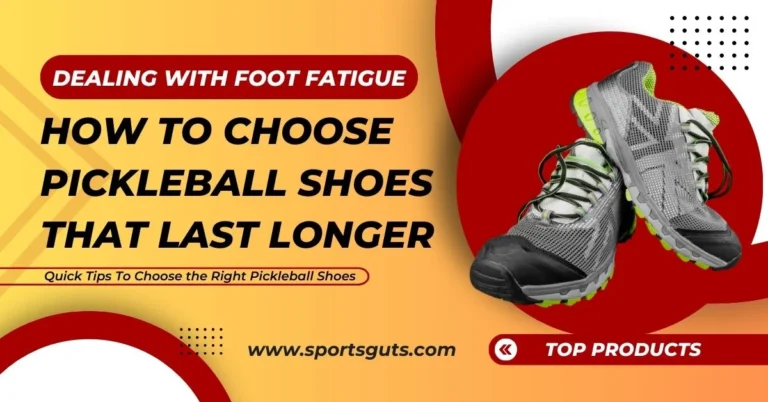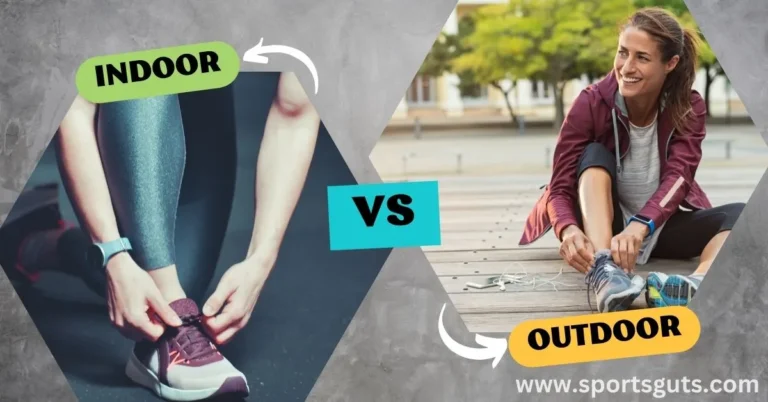Rubber Sole vs Plastic Sole – Pros, Cons, and Best Choice Explained
Regarding the choice of footwear, one credible factor to note is its soles. To attain comfortability, soles are high; authentic facto should be monitored. However, apart from noticing the significant fact, the people better be clear about the types of soles and all the points of difference. While depicting the details, here is a quick overview of Rubber Sole vs plastic Sole in pickleball shoes.
The main difference between rubber and plastic soles is their composition and properties. Rubber soles, typically made from natural or synthetic rubber, offer better flexibility, durability, and traction. On the other hand, plastic soles, commonly crafted from materials like PVC or TPU, may be more rigid, less flexible, and potentially less slip-resistant than rubber soles.
Let’s have a detailed analysis of sole material differences with all the majors and minors of rubber and plastic soles so that the difference in factors can be productive for making a quick pickleball footwear choice.
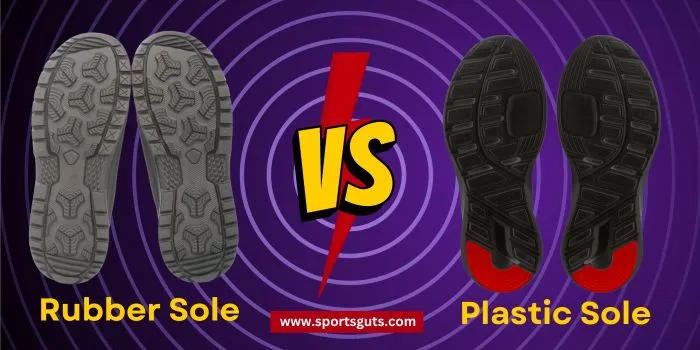
Different Type of Soles for Pickleball Shoes
The significance of footwear must be maintained as it plays a primary role in supporting and comforting your feet while providing full coverage to your foot. Regarding the choices, Rubber Sole vs Plastic Sole has a thoughtful competition.
Both options offer credible plus points that depict the people’s overall suitability for the choice. Some of the comfortability points these soles convey are as follows:
Rubber Soles – Explanation
Read the follow to know everything about rubber sole in pickleball shoes:
Comfort and Flexibility
Rubber soles are renowned for their comfort and flexibility. They provide a cushioning effect that helps absorb shock during walking or running, reducing the impact on joints and muscles. The natural elasticity of rubber allows the sole to bend and flex, providing a more comfortable and natural walking experience.
Traction and Grip
Rubber soles offer excellent traction on surfaces, including wet or slippery conditions. This traction in rubber soles makes them ideal for outdoor activities and sports where a firm grip is essential. By fulfilling the needs and requirements of the players, the rubber sole becomes more flexible to deal with the regular usability needs.
Durability
Rubber soles are generally durable and resistant to wear and tear. They withstand abrasion well, making them suitable for everyday use and prolonged periods of walking.
Breathability
Natural rubber has some degree of breathability, allowing air circulation around the foot. It can be beneficial for reducing moisture and maintaining a more comfortable environment inside the shoe.
Plastic Soles – Explanation
Affordability and Versatility
For rubber vs. plastic footwear, plastic soles are often more affordable than rubber soles, making them a popular choice for budget-friendly footwear. Additionally, the versatility of plastic allows for various designs and colors.
Water Resistance
In terms of the difference between rubber soles and plastic, unlike some rubber soles, many plastic soles are inherently water-resistant. This feature can be advantageous in wet or rainy conditions, as plastic repels water more effectively. Using this sole option, the players who are up the water related surface, are safe from all sorts of slip injuries.
Weight
Plastic soles are generally lighter than rubber soles, contributing to a lighter overall shoe. It’s important for those seeking lightweight footwear for travel or specific sports. All those who are expecting comfort, especially in terms of their footwear, should go for the correct pick by choosing flexibility in plastic soles.
Environmental Impact
One significant drawback of plastic soles is their environmental impact. Most plastics are derived from fossil fuels and are not biodegradable, contributing to pollution and long-lasting ecological harm.
Rubber Sole vs Plastic Sole: Types
| Plastic Soles | Rubber Soles |
|---|---|
| PVC plastic soles | Natural rubber soles |
| PU plastic soles | Synthetic rubber soles (Durable &Water Resistant) |
| – | SBS rubber soles (Silicon, Polychloroprene, Polyisobutylene etc.) |
Rubber and Plastic Soles – Similarities & Dissimilarities
The critical differences between Rubber and plastic Soles are discussed below.
Which is the Best Option for Pickleball Shoes? Rubber Sole or Plastic Sole
In comparison, of Rubber Sole vs. plastic Sole, deciding on the preferable choice is not good. Because both of them are aligned with their advantages and disadvantages.
For instance, if rubber soles are excellently known for traction ability, then plastic soles are prevalent for being lightweight and more flexible. In the same way, rubber soles get melted at high temperatures and are protective against the floors, providing safety against chemicals, whereas plastic soles provide excessive insulation properties.
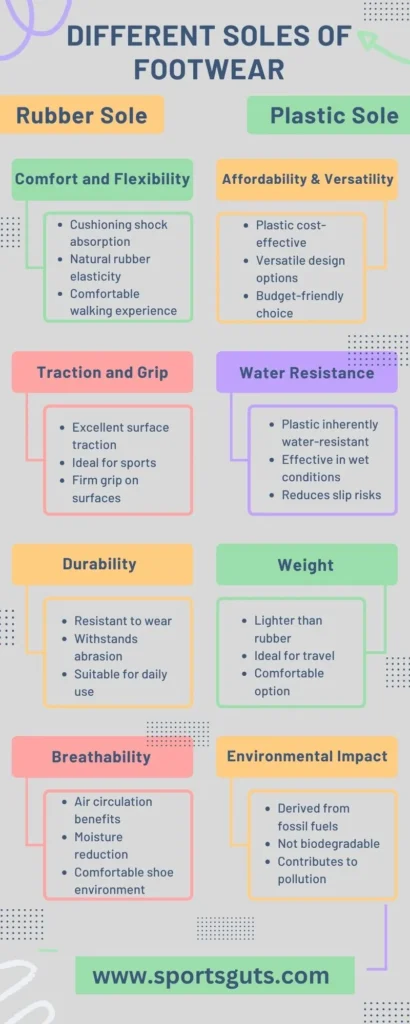
FAQs
Are rubber soles more environmental friendly than plastic soles?
Yes, rubber soles are generally more environmental friendly as they are often biodegradable, whereas most plastics used in shoe soles are not.
Which type of sole is better for slippery surfaces?
Rubber soles are better for slippery surfaces due to their superior traction and grip.
Are plastic-soled shoes suitable for athletic activities?
Plastic-soled shoes may be lightweight, but rubber soles are generally preferred for athletic activities for their comfort, flexibility, and better shock absorption.
Conclusion
Overall, depicting one option from Rubber Sole vs Plastic Sole is challenging. Because if one choice is not working or credible in one situation, it might be fruitful to use that sole in another position.
Enjoying the individual plus points, the choice of the best one becomes a subjective matter. People choose it as per their own needs and preferences that they can use and implement on their daily workaholic demands.
We hope that most of your mind queries might be apparent through the comprehensive analysis of Rubber Soles vs. plastic Soles depicted above. Now choose the pickleball shoes for indoor and outdoor as per your needs.


